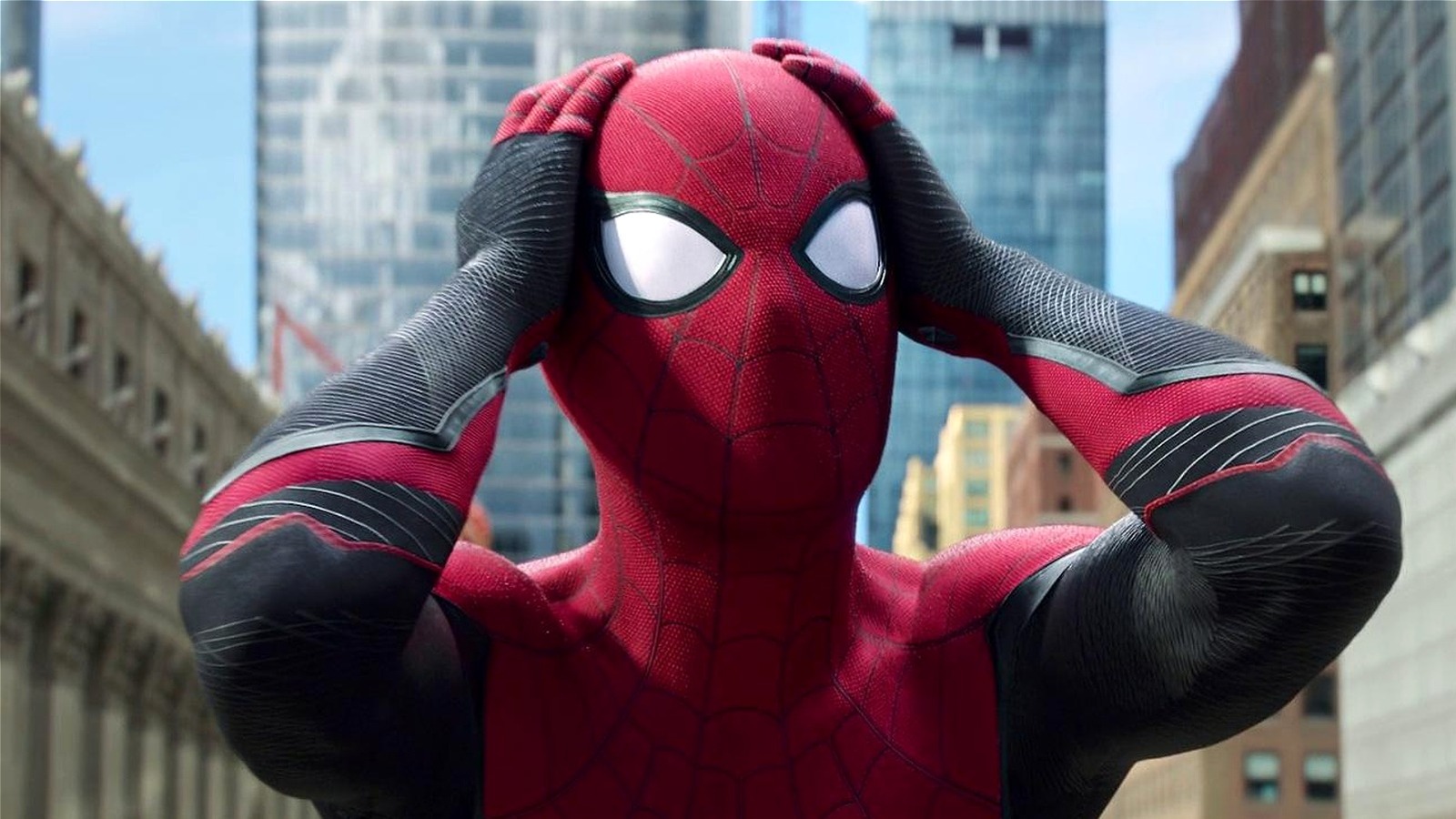
When examining each Marvel Cinematic Universe (MCU) film, including rating them from least favorite to most loved, it’s easy to spot the creative ups and downs within the franchise. While the range of artistic quality in this series is quite apparent, a term like “weird” may not come up frequently. This is because the majority of MCU films are PG-13 productions designed to captivate audiences of all ages. However, the production history behind these movies is far from ordinary, filled with fascinating and unusual details. Contrary to their family-friendly appearances on screen, the production processes of the MCU are brimming with peculiar facts.
Different facts don’t always manifest in the same manner. Some quirky details might just be surprising tidbits, such as the unanticipated character who appears in every “Captain America” film. Other unusual findings revolve around weightier subjects and delve into baffling business and creative practices associated with some of the world’s largest films. Additionally, there are trends at the box office or composers who have collaborated most frequently with the MCU.
Instead of dismissing the less memorable films such as “Captain America: Brave New World” as if Marvel Studios were producing bland, white-bread quality content, a closer look reveals fascinating tidbits hidden even in the unlikeliest parts of the Marvel Cinematic Universe’s past.
The only character to return in every Captain America movie, isn’t Captain America
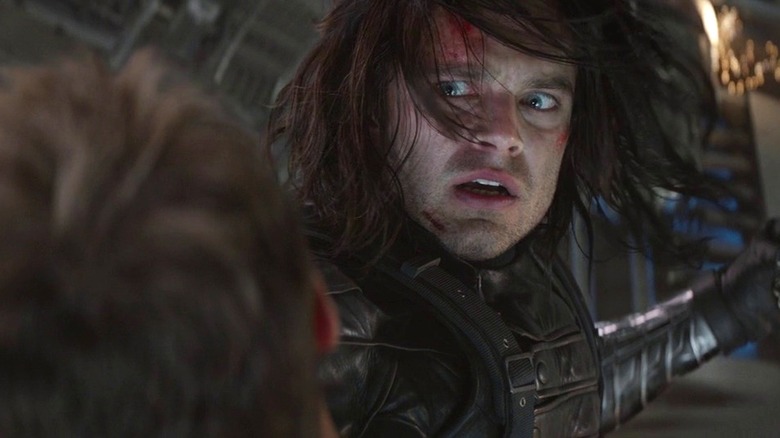
The initial three “Captain America” films, as well as the first three phases of the Marvel Cinematic Universe (MCU), heavily centered around Steve Rogers (played by Chris Evans). A character once considered too ‘corny’ for contemporary viewers, Captain America proved to be the essential soul of the MCU and contributed significantly to some of its most memorable scenes.
The Captain America role has gained such significance that it was handed over to Sam Wilson (Anthony Mackie), who starred in 2025’s “Captain America: Brave New World.” Interestingly, neither version of the main superhero character appears in all four solo Captain America films. Instead, the only consistent character across every single standalone Captain America production is Bucky Barnes, also known as the Winter Soldier (Sebastian Stan).
Initially appearing as a supporting character in “Captain America: The First Avenger,” Bucky Barnes has since grown to be a cherished figure within the Marvel Cinematic Universe, starring in films such as “Thunderbolts.” This popularity is evident even 14 years post his debut, with the second “Thunderbolts” poster explicitly promising fans more of the beloved character. His longevity mirrors that of Steve Rogers, having been a part of the story for 70 years. In the future-set “Brave New World,” Barnes made an essential cameo appearance, offering words of encouragement to Wilson. Owing to Bucky’s determination not to fade away (in addition to Stan Lee’s nine-film contract with Marvel Studios), he has become an even more integral part of the solo “Captain America” movies than the main character himself.
Michael Bay’s Transformers movies really influenced the MCU’s Phase One
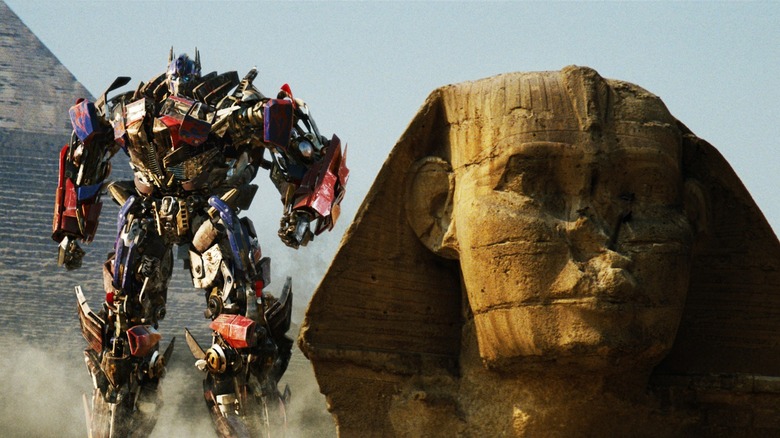
One notable factor that set Phase One projects such as “Iron Man” and “The Avengers” apart from other superhero movies of the 2000s/early 2010s like “Ghost Rider” or “Jonah Hex” was their exceptional critical acclaim. It’s intriguing to discover that the early Transformers films directed by Michael Bay served as a foundation for Marvel Studios head Kevin Feige’s original concept of the franchise.
In 2009, Kevin Feige looked towards “Transformers: Revenge of the Fallen” as an example of the crowd-pleasing blockbuster he aspired for “The Avengers”, despite its poor critical reviews. This was one of the lowest-rated blockbusters ever made, yet it served as a model for Feige’s strategies – and he would often mention the “Transformers” series in this context.
In the following years, Feige admitted that the grandeur of “Transformers: Dark of the Moon” served as a benchmark for the scale that “The Avengers” should emulate to avoid appearing too modest. The destruction of Chicago by colossal robots added an extra layer of pressure on Feige when producing “Avengers.” It might seem strange, but films like these, initially met with criticism, ultimately set the stage for Marvel Studios’ future successes such as “Black Panther” and “Thor: Ragnarok.” Looking back, these statements demonstrate Feige’s dedication to crafting Marvel Cinematic Universe movies that stood out from other superhero films. Contrary to popular belief, it wasn’t the 2007 “Fantastic Four: Rise of the Silver Surfer” that influenced Marvel Studios projects; rather, it was the lucrative (albeit critically panned) and colossal “Transformers” movies.
Why the Marvel One-Shots died on the vine
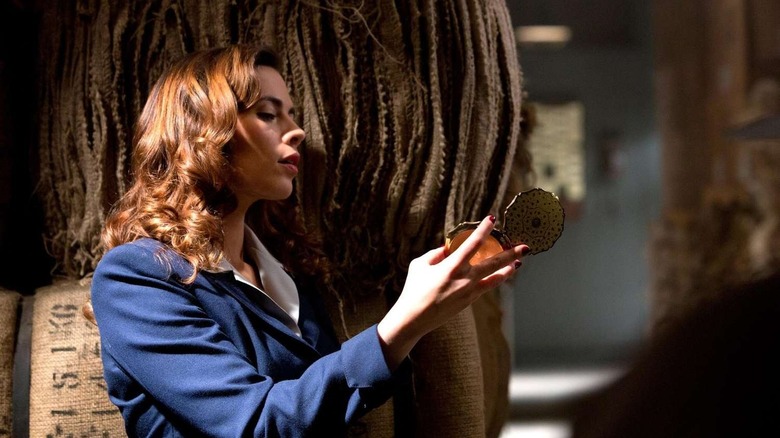
Beginning in September 2011 with the physical media debut of “Thor,” Marvel Studios added an additional treat for fans who purchased any title from the MCU on Blu-Ray or DVD. These bonus features were Marvel One-Shot short films, initially modest projects filmed in small diners and convenience stores starring Clark Gregg and a few other actors. However, as the number of One-Shots increased, they expanded in scope, eventually featuring Hayley Atwell and Ben Kingsley reprising their roles from the MCU. Although these short films had significant potential, they were only a temporary aspect of the MCU. The Blu-Ray release of “Captain America: The Winter Soldier” did not include a one-shot, and since the “Team Thor” shorts connected to “Thor: Ragnarok,” Marvel Studios discontinued producing short films.
In 2015, Feige stated that the production of these One-Shots ceased because Marvel Studios lacked the necessary resources and energy to produce more while following a new policy of releasing three films per year. However, as the MCU continued to grow in popularity in the 2020s, Marvel Studios significantly increased its resources to accommodate numerous Disney+ exclusive TV shows, animated programs, and mini-series. This leads one to wonder why these relatively cheaper projects couldn’t also benefit from this expansion. Regrettably, the One-Shots disappeared without explanation over a decade ago, leaving many questioning their disappearance given the circumstances that seem illogical in retrospect.
The Marvel Studios logo didn’t always have its famous theme music
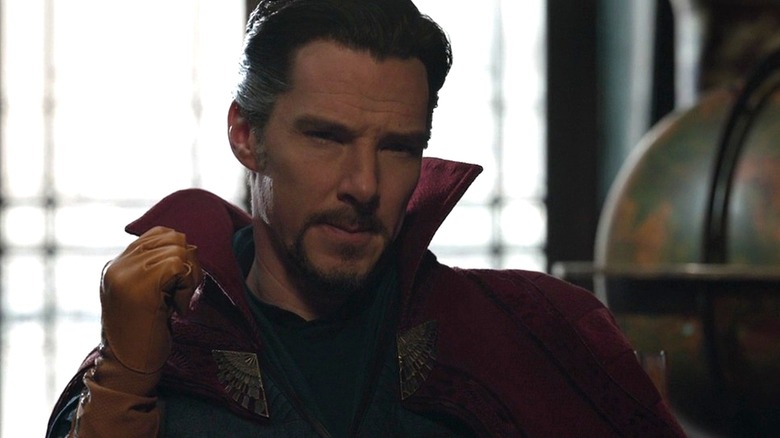
Today, Michael Giacchino’s Marvel Studios fanfare by composer Michael Giacchino is incredibly iconic. The track, debuted before “Doctor Strange” in November 2016, pulses with immediate energy and grandeur due to its heavy reliance on trumpets, powerful drums, and crashing cymbals. Yet, it wasn’t the initial significant effort to create a fanfare for Marvel Studios’ animated logo.
In November 2013, three years ago, Marvel Studios debuted their first theme song for “Thor: The Dark World”, composed by Brian Tyler who often works on Phase Two films. This melody differs significantly from Giacchino’s, with a lower pitch being one of the key differences. There’s a heavier, more ominous undertone to Tyler’s composition, giving the fanfare a more serious and suspenseful feel. The track concludes on a slightly foreboding note, hinting at something significant yet uncertain lurking ahead.
Meanwhile, the music of Giacchino takes on a triumphant tone, reminiscent of a pep rally. It’s unclear whether Marvel Studios sought a fresh composition to match their box office success or simply desired a new tune from a composer still associated with the MCU. However, what is certain is that Tyler’s theme was replaced after only three years. Looking back, it seems that Tyler’s Marvel Studios theme served as an unusual trial run for Giacchino’s now-iconic composition.
Only the Black Panther MCU movies have won an Oscar
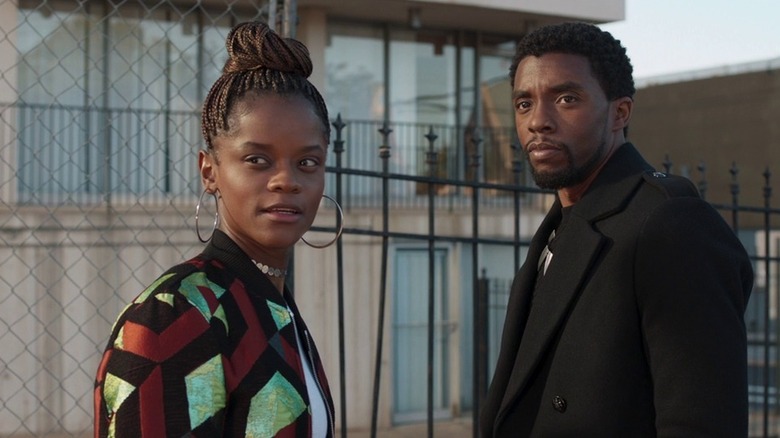
The “Black Panther” films, especially the initial one, made history at the Oscars with several accolades they received. Notably, the second film was the first Marvel Cinematic Universe (MCU) movie to win an Oscar, snagging three statues at the 2019 Academy Awards ceremony. “Black Panther: Wakanda Forever,” which debuted in 2022, secured one triumph in the category of best costume design. In total, the Marvel Cinematic Universe has garnered 23 additional Oscar nominations across different categories over time. However, it’s worth noting that these nods have only led to Oscar wins for “Black Panther” titles, with no other films from the MCU earning an Oscar as yet.
For more than two decades, the Marvel Cinematic Universe (MCU) has been largely overlooked at the Academy Awards, a trend not unique to this comic book series. In fact, the realm of blockbuster films often struggles to earn Oscar recognition. For example, following “A New Hope,” the next nine live-action “Star Wars” movies garnered a total of 27 Academy Award nominations over nearly three decades. However, excluding honorary victories, only one of these nods translated into an actual win – best sound for “The Empire Strikes Back.
If “Star Wars” didn’t win many Oscars after 1977, it’s not shocking that the Marvel Cinematic Universe (MCU) also failed to break traditional Academy Award rules for blockbuster movies. However, it remains puzzling why none of the MCU films, except for “Black Panther,” have ever received an Academy Award. In fact, even a DC film like “Suicide Squad” won an Oscar for best makeup.
The rarity of non-Avengers MCU movies topping the yearly worldwide box office
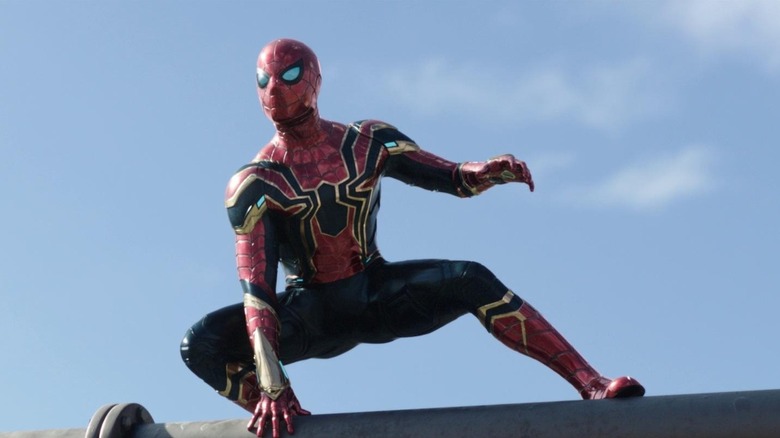
Mostly speaking, films from the Marvel Cinematic Universe typically earn enormous amounts at the box office. This is evident when we consider that “Avengers: Endgame” briefly held the title of highest-grossing movie worldwide, and blockbusters like “Spider-Man: No Way Home” and “Black Panther” have also raked in substantial profits over their lifetimes. As a result, it’s not hard to understand why movies produced by Marvel Studios are often seen as guaranteed money makers.
Interestingly, even though the Marvel Cinematic Universe (MCU) has been highly successful, its films are uncommonly not the top-grossing movies of the year. Only two MCU films outside the Avengers series, “Captain America: Civil War” and “Spider-Man: No Way Home,” have held this position. Even blockbusters like “Iron Man 3,” “Deadpool & Wolverine,” and “Doctor Strange in the Multiverse of Madness” didn’t take the lead in their release years. This pattern has been apparent since 2008, when “Iron Man” earned less than half of “The Dark Knight’s” global box office revenue.
In many years, the highest-grossing films in the Marvel Cinematic Universe (MCU) don’t usually take the top spot on the global box office chart. For example, “Frozen” earned more than “Iron Man 3,” and “Transformers: Age of Extinction” surpassed “Guardians of the Galaxy” in 2014. Despite the enormous successes of films like “Thor: Ragnarok” and “Captain Marvel,” this pattern persists, and it’s an interesting observation that MCU movies seldom hold the title of the year’s biggest film.
The whole Phases terminology came about for bizarre reasons
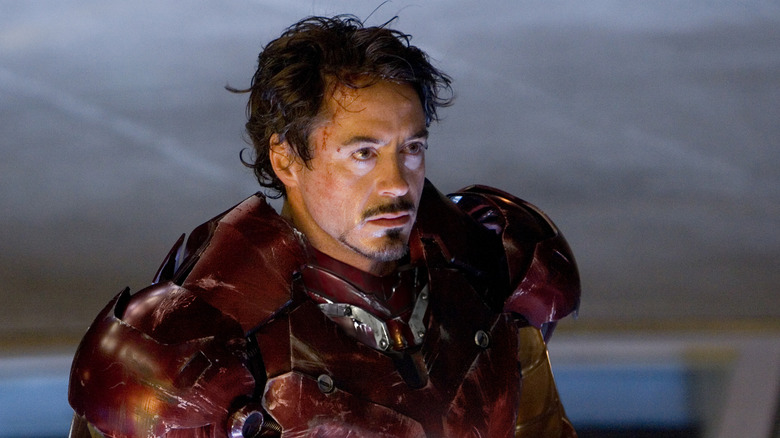
Have you ever pondered why the Marvel Cinematic Universe splits its timeline into Phases? As the release of “Avengers: Endgame” approached, Kevin Feige, the head of the franchise, shared an interesting story about this. In the early days of the MCU, he was worried that the productions might be labeled as individual trilogies like “the Iron Man series.” Although such titles suited the Sam Raimi “Spider-Man” films, Feige wanted language that clearly indicated these comic book movie worlds were interconnected. To achieve this, the idea of dividing the MCU’s narrative into Phases was introduced. For example, Phase One would include movies like “Iron Man,” “Captain America,” and “Avengers,” among others.
The labeling system called Phases didn’t quite take off as planned in the MCU. Instead of being used to denote specific groups of superhero films, it has mainly been employed to succinctly describe different eras in the franchise’s history. People often talk about “the Guardians of the Galaxy trilogy” or “the first Captain America trilogy,” so the purpose behind terms like “Phase Five” remains relevant, even though its common usage may deviate from Kevin Feige’s original concept. This naming convention persists because it helps emphasize the shared continuity within the MCU and distinguishes it from other superhero sagas.
Iron Man 3’s villain was originally a woman
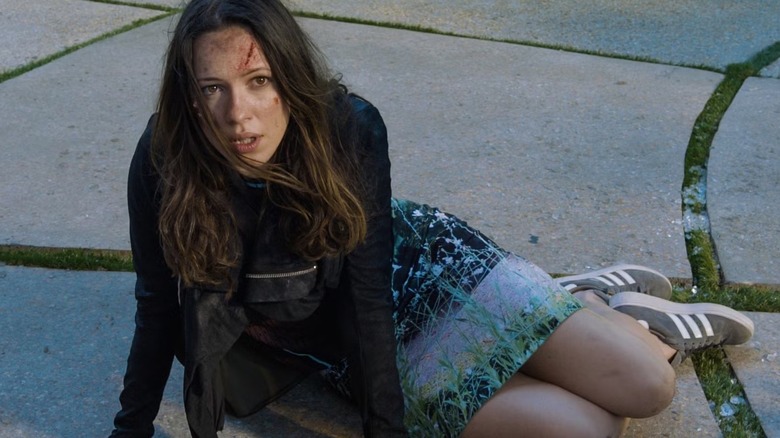
One particularly vexing aspect of the Marvel Cinematic Universe (MCU) lies in its less-than-optimal portrayal of female characters. Originally, this issue surfaced with women often being assigned as stoic love interests, and it continues to be an issue up through Phases Four and Five, with flaws such as a tendency to eliminate female superheroes and villains. A striking example of this trend can be seen in one of the most intriguing details within MCU folklore: the original antagonist for “Iron Man 3” was intended to be a woman.
From the beginning of the script, Rebecca Hall’s character Maya Hansen was intended to be the movie’s main mastermind. However, according to director Shane Black, officials at Marvel Entertainment (distinct from Marvel Studios executives) were firm that Hansen should not hold this position. These executives believed that a female antagonist would lead to substantially lower merchandise sales.
Initially, Black felt dismayed by the course of events as she had no influence over the decision, and Guy Pearce’s character, Aldrich Killian, ultimately emerged as the primary antagonist in “Iron Man 3”. Meanwhile, Hansen remained, playing a sadistic sidekick role that ended in her demise. As her original purpose was eliminated, there wasn’t much left for Hansen to contribute, which seemed odd given Hall’s reputation. Not surprisingly, Hall later voiced disappointment over the role’s decline during “Iron Man 3” production. Regrettably, this isn’t an isolated instance in the Marvel Cinematic Universe where women were given less thrilling and enjoyable on-screen roles.
Captain Marvel almost debuted in Avengers: Age of Ultron
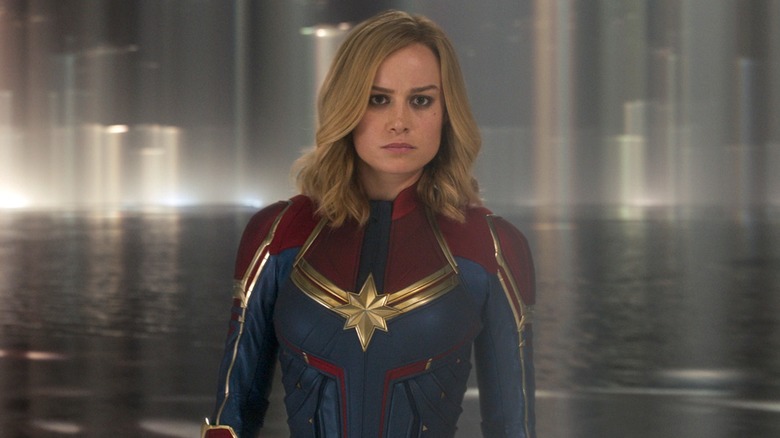
Before the post-credit scene in “Avengers: Infinity War,” Carol Danvers (played by Brie Larson) initially had plans to make her first significant appearance in the MCU much earlier, but it was not until her solo movie’s release in 2019 that this happened. However, it is interesting to note that Captain Marvel almost premiered in a completely different Marvel Cinematic Universe film.
Joss Whedon, the writer/director, made a strong effort to incorporate Captain Marvel (alongside Spider-Man) towards the finale of “Avengers: Age of Ultron,” in a short scene highlighting the fresh members that Captain America and Black Widow would command in the upcoming sequel. Whedon’s enthusiasm for this cameo even extended to creating preliminary visual effects, such as an impressive shot of the character flying onto the Avengers campus. Unfortunately, Captain Marvel was absent from “Age of Ultron,” with Wanda Maximoff and Vision serving as the standout new recruits at the film’s conclusion instead.
The elimination of that particular scene marked the end of Whedon’s prolonged quest to incorporate Captain Marvel into his “Avengers” sequel follow-up. In 2015, Kevin Feige disclosed that the main motive behind her omission from “Age of Ultron” was to let the audience get to know Captain Marvel as a character before she joined forces with the Avengers in action. It wasn’t until four more years had passed that fans finally got to see Carol Danvers on screen, a delay which actually provided a stronger introduction for the character compared to what could have been just a peculiar cameo.
One composer has scored more MCU movies than anyone else
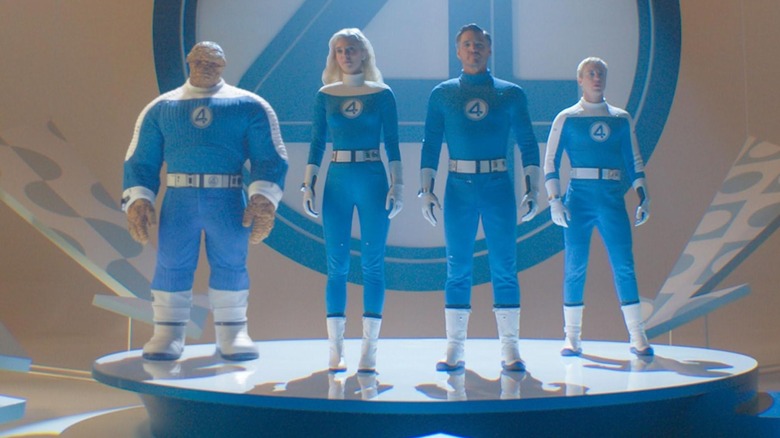
In a somewhat peculiar way, the Marvel Cinematic Universe (MCU) has an unconventional connection with its film composers. Compared to other blockbuster franchises such as “Star Wars” or “The Lord of the Rings,” the MCU seems to frequently change composers. While John Williams and Howard Shore have consistently scored every aspect of their respective films, the MCU often employs different musicians for each solo project like “Iron Man” or “Thor.” As a result, numerous individual composers such as John Debney, Joel P West, Mark Mothersbaugh, and others can be found scattered throughout the MCU’s various projects. It becomes noteworthy when the Marvel saga hires composers like Alan Silvestri and Ludwig Göransson for multiple films because they are exceptions to this pattern.
As a devoted fan, I find it truly awe-inspiring to witness Michael Giacchino’s exceptional musical journey within the Marvel Cinematic Universe (MCU). Unlike any other, he has orchestrated the music for an impressive number of Marvel Studios titles, making his contributions even more remarkable. It’s almost unbelievable that, not only does he compose the current MCU logo theme, but he has also scored a staggering six films for the studio (including “The Fantastic Four: First Steps”).
His Marvel legacy extends beyond just scoring movies; he has even directed and composed the music for the Marvel Studios Television Special “Werewolf By Night.” Throughout his extensive MCU experience, Giacchino has crafted many unforgettable tracks, but none more so than his ingenious blending of various sonic eras in “Spider-Man: No Way Home.” He stands out as a unique and gifted anomaly, defying the typical one-and-done composer model that Marvel Studios usually adheres to.
The Eternals almost debuted in an ABC TV show
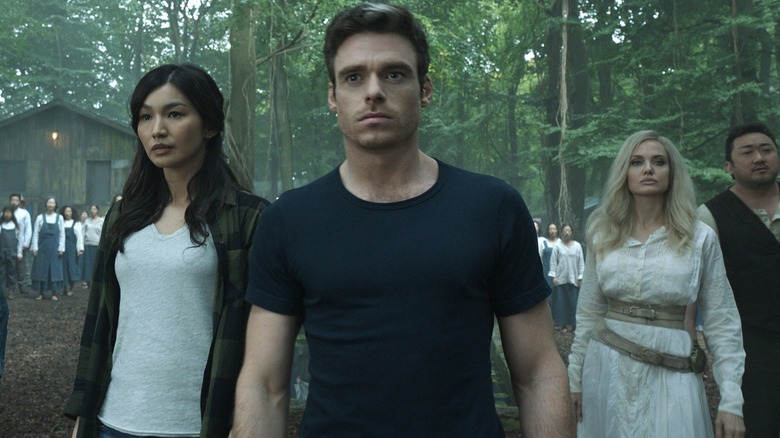
In 1976, Jack Kirby introduced the Eternals through the first issue of “The Eternals.” Despite being developed by one of Marvel Universe’s major creators, apart from a 2014 motion comic, this unique group of superpowered characters had not been portrayed in any non-comic media until 2021. It was then that the highly budgeted and critically debated “Eternals” movie directed by Chloe Zhao premiered in cinemas.
It might surprise some Marvel enthusiasts that their favorite characters were initially intended to appear on screen during the 2010s through television shows rather than movies. John Ridley’s long-planned Marvel series for ABC, which was announced as early as April 2015 when “Agents of S.H.I.E.L.D.” was concluding its second season, turned out to be an abandoned attempt at introducing the Eternals. In early 2024, this was finally confirmed by Ridley himself, who also shared details about the daring and dark aspects that would have been featured in his series, such as the pilot’s opening scene depicting a teenager apparently attempting suicide using a power drill to his ear.
Instead of feeling disappointed that the “Eternals” series didn’t occur, Ridley Scott expressed appreciation for it not happening as he felt the project required a more popular and eccentric approach. He mentioned that material that appeals to him tends to be more bizarre and complex. It’s intriguing to imagine “Eternals” airing on the same network as “The Middle,” but the flop of the “Inhumans” TV show indicates that high-cosmic Marvel characters might not have been suitable for budget-restricted ABC programming. However, the unproduced Ridley Scott project does show that Marvel had a strong interest in the Eternals even before the 2021 blockbuster failed.
Read More
- Gold Rate Forecast
- Pi Network (PI) Price Prediction for 2025
- USD CNY PREDICTION
- EUR CNY PREDICTION
- Silver Rate Forecast
- 10 Most Anticipated Anime of 2025
- USD MXN PREDICTION
- USD JPY PREDICTION
- Brent Oil Forecast
- Capcom has revealed the full Monster Hunter Wilds version 1.011 update patch notes
2025-05-11 20:21